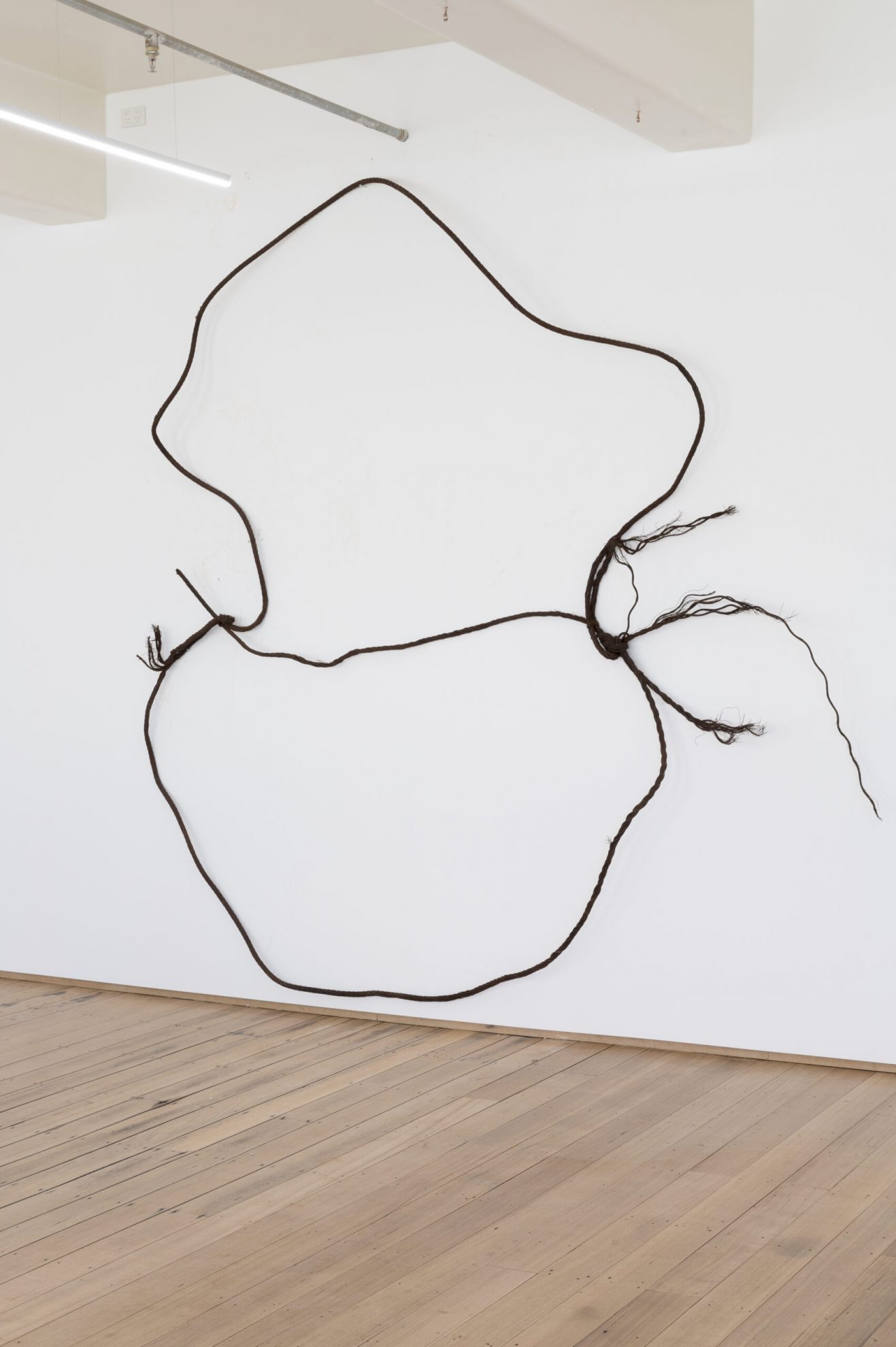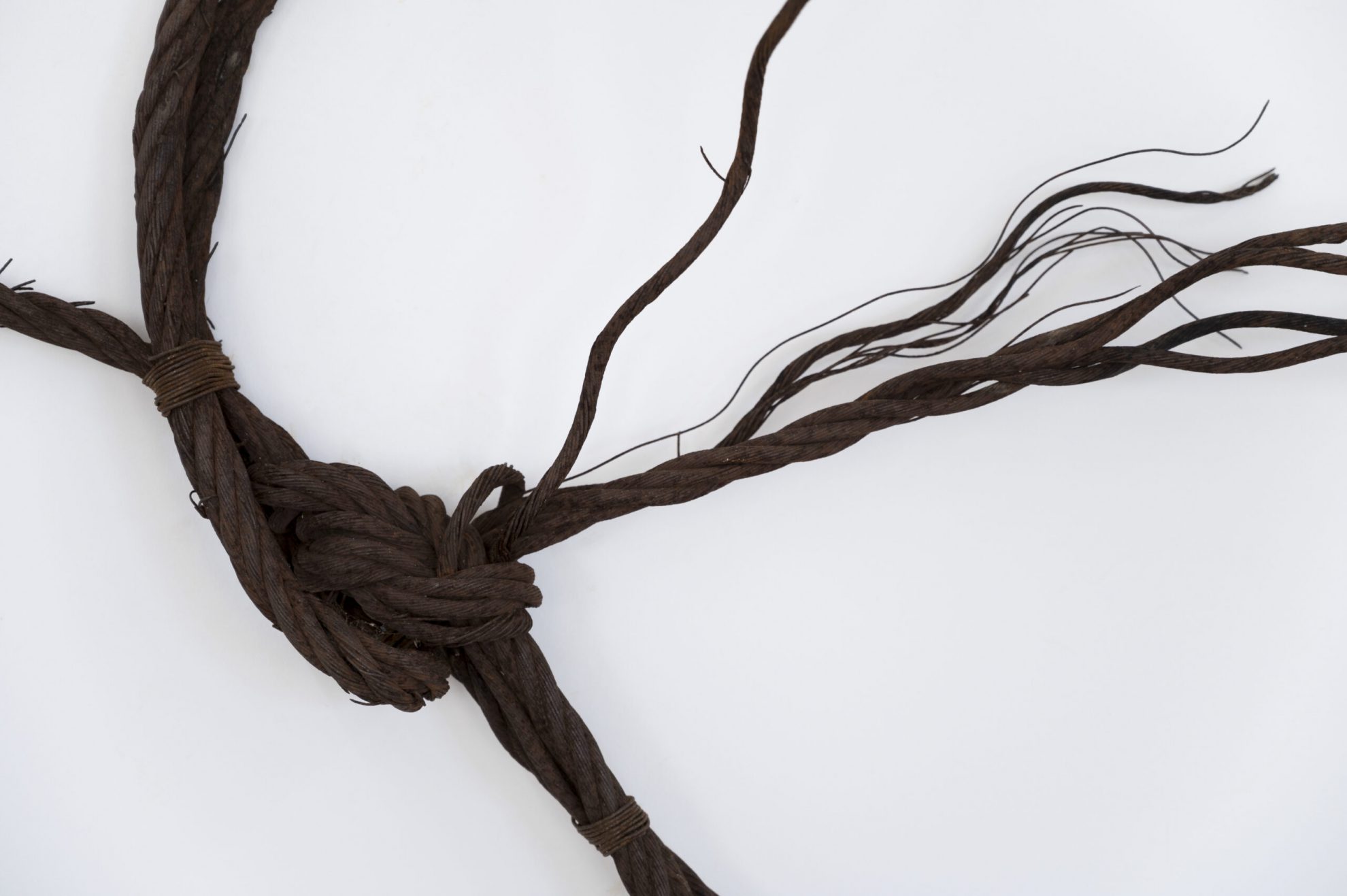A large section of Connelly-Northey’s work focuses on reproducing the form of the Narrbong. These woven fibre bags are traditional to the Waradgerie (Wiradjuri) people for the gathering, collecting, and storing of food and other objects of value. As a tool, they are intrinsically linked to the reproduction of a culture through the simple and universal need to provide, gather, carry, hold. She reproduces this form with a range of gathered materials found on the side of the road, in illegal rubbish dumps, or decaying on farms. Connelly-Northey asserts that her practice is undergirded by her culture’s principle that “you only take what you need”. Because of this, she only focuses on collecting materials and producing artworks when an exhibition dictates it. Furthermore, if a work goes unsold or is returned to Connelly-Northey, it may be digested as material for another work.
As Connelly-Northey explains:
“The scouting begins when I get a commission for an exhibition. We Aboriginal people only take what we need when we need it. I do a lot of travelling to spot something and it can take up a lot of time. On one occasion, it took me two years to find the owners of a farm to take two rolls of wire. It is not easy, but well, it is about earning what you get. Before I had a driving licence I had to rely on other people. It is still hard to know how much I need, so I tend to get a bit too much. But the beauty of that is that I always work from leftovers and if I don’t use a material, I take it back. Also, in the sculpting process, I try to not alter the material too much.” [01]
The work on exhibition here is composed of two bag forms from Connelly-Northey’s Narrbong-Galang (many, many bags) exhibition at Roslyn Oxley Gallery last year.

